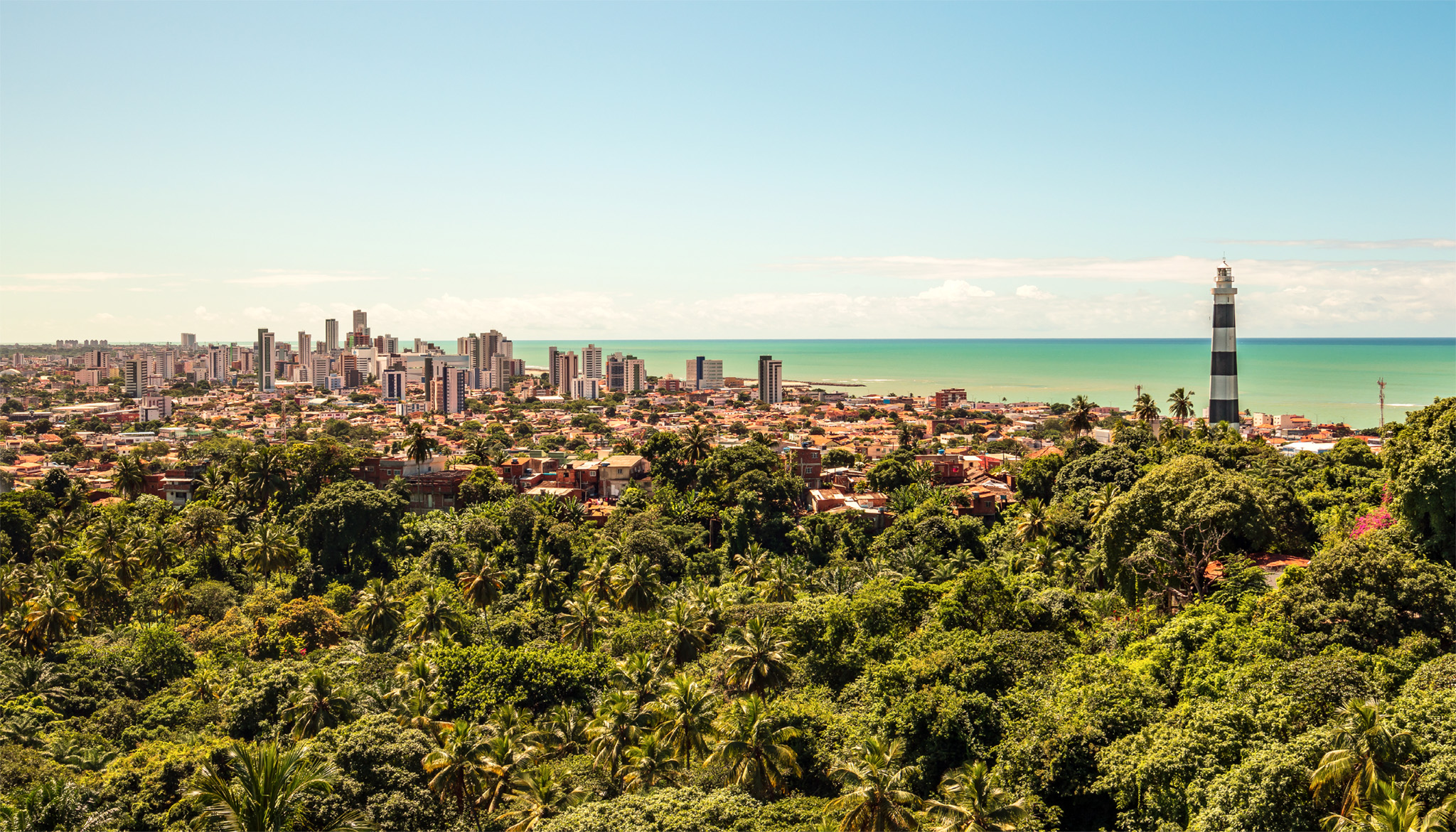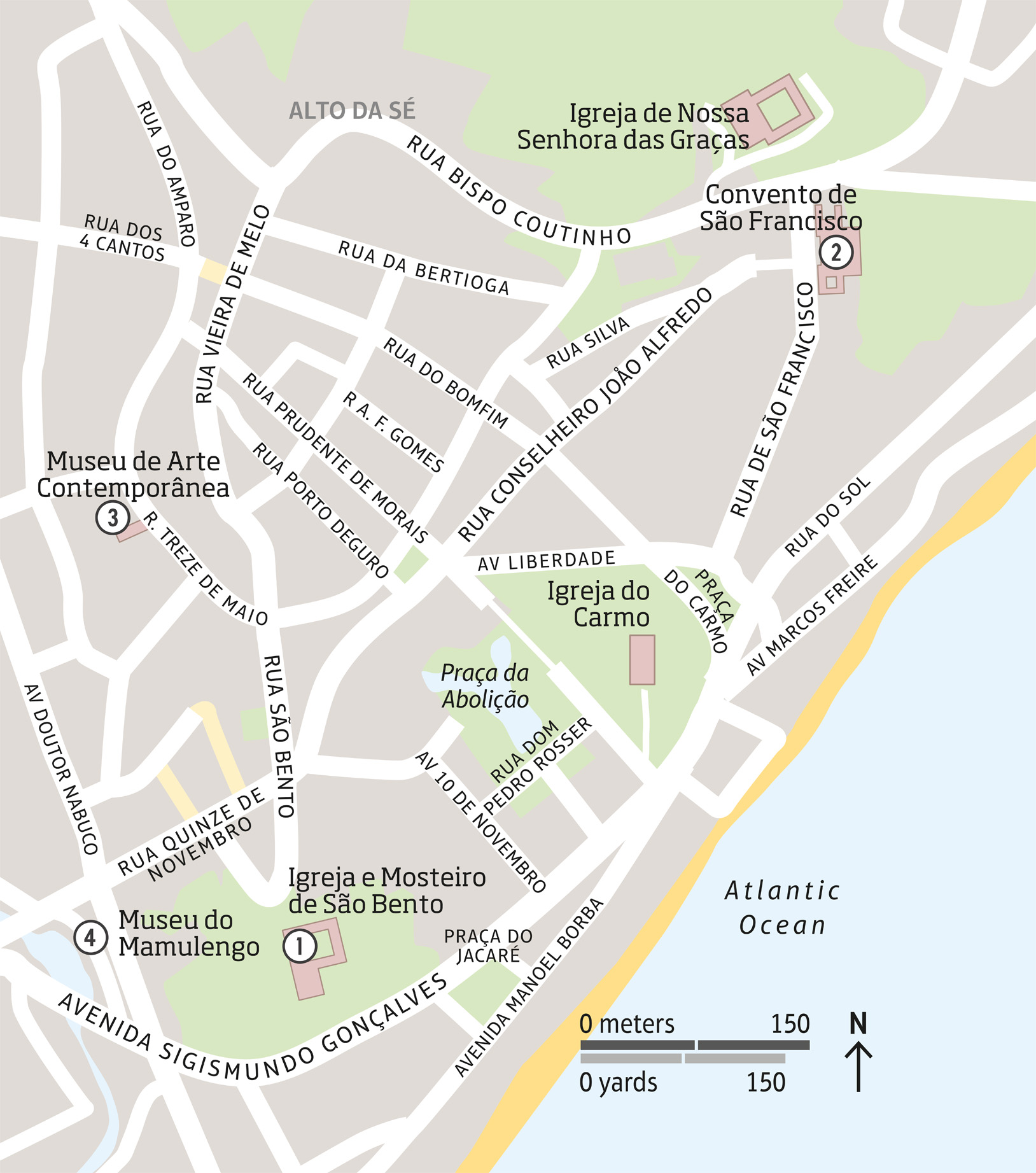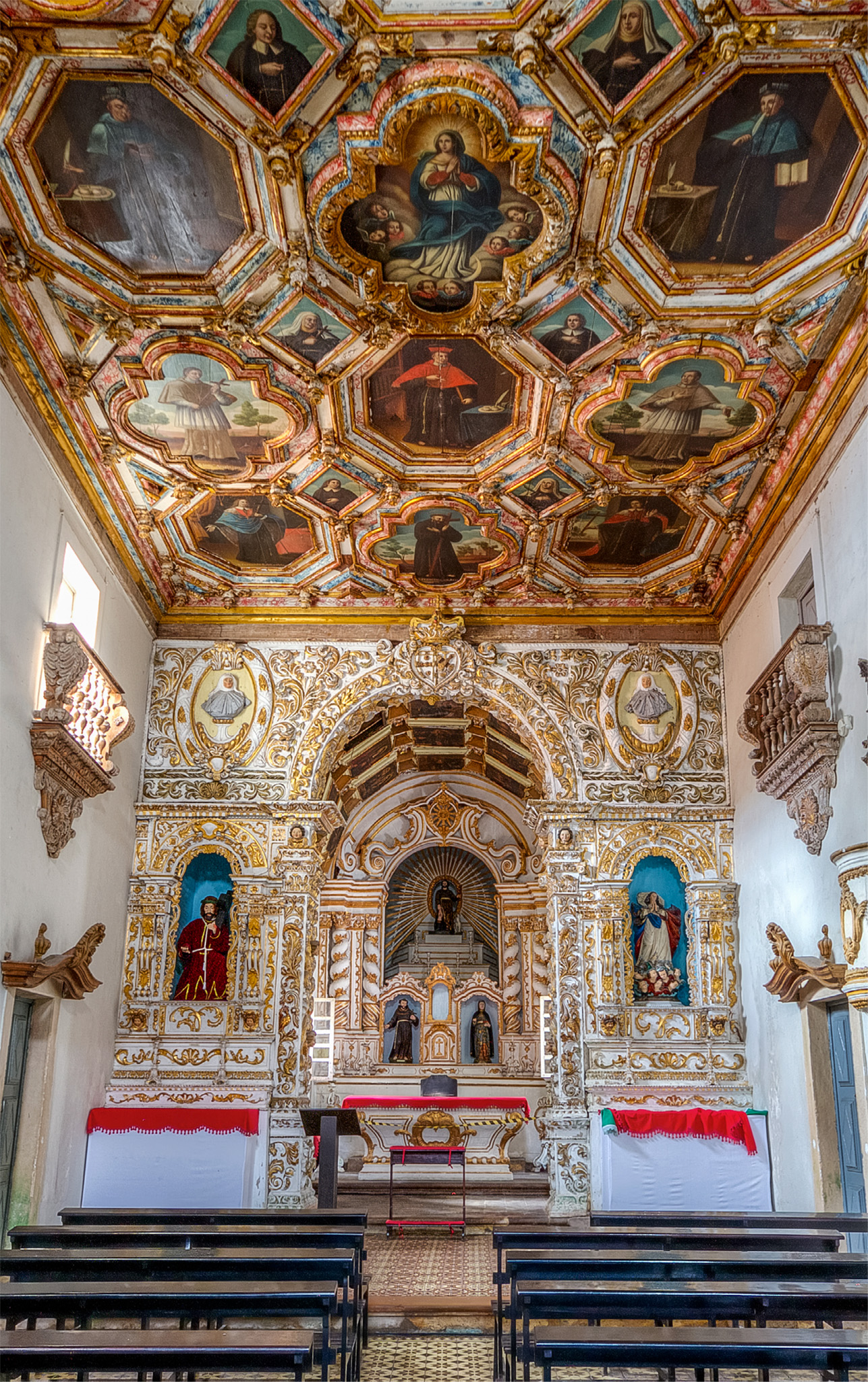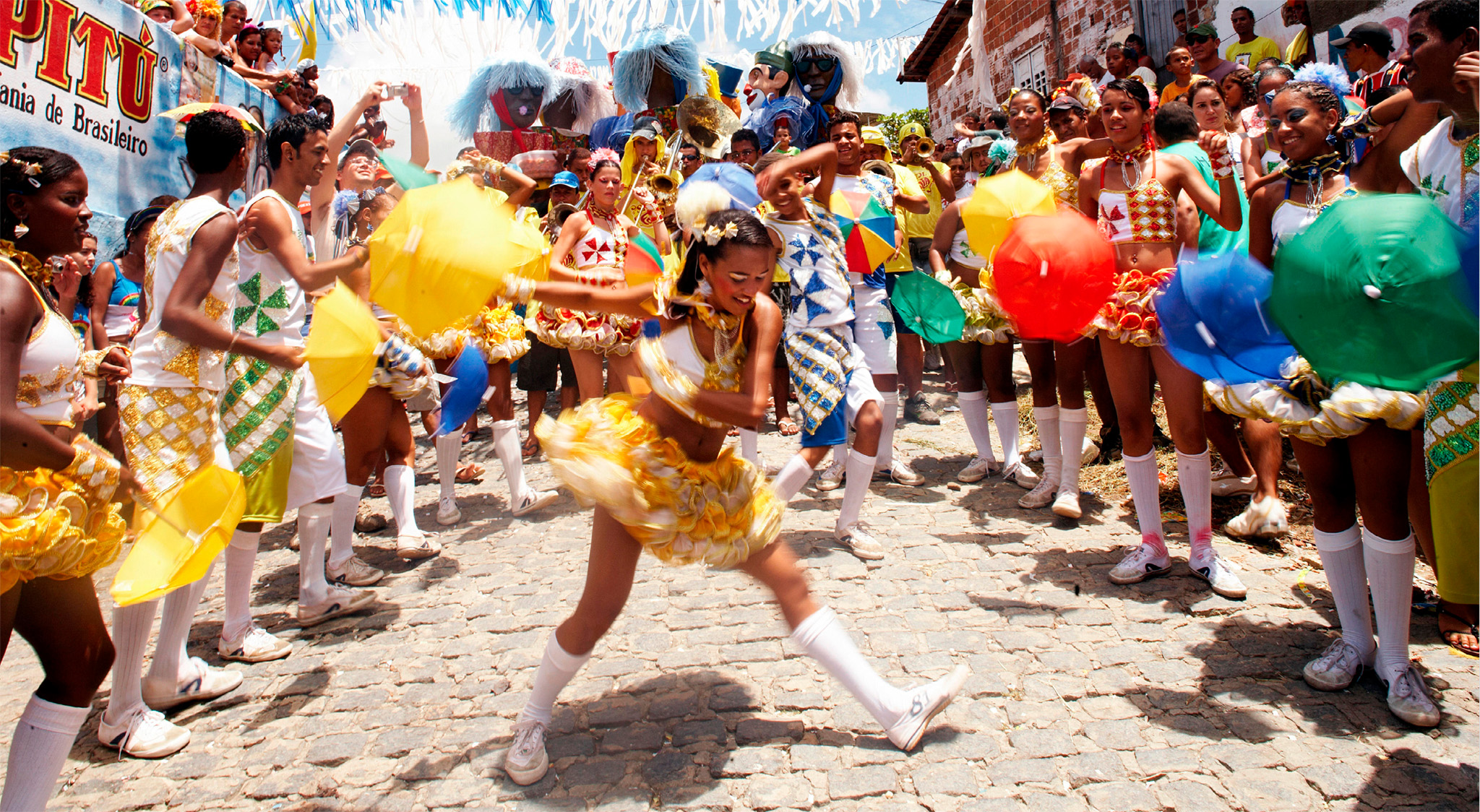
t Olinda Lighthouse rising before the turquoise ocean, with the cityscape in the distance
One of the best-preserved colonial cities in Brazil, Olinda was founded in 1535 by the Portuguese – though the land was previously occupied by the Caetés and Tupinambá people. Much of the city was burned down during the Dutch occupation in 1631 but was later restored, and Olinda was designated a UNESCO World Heritage Site in 1982. Its narrow cobblestoned streets are perfect for exploring on foot.

t Olinda Lighthouse rising before the turquoise ocean, with the cityscape in the distance
Experience Sergipe, Alagoas, and Pernambuco

n Double-tap image to read the labels
Built in 1582, this monastery was destroyed by the Dutch along with most of the city, and rebuilt in the late 18th century. It is acclaimed for its Baroque altar in the chapel and intricate wood carving, which features the image of São Bento (St. Benedict) himself. The original wood altar has been repainted with gold leaf, a process that took more than a year and 30 professionals during a period of restoration in 2001. The sacristy’s three large paintings, by 18th-century artist José Eloy da Conceição, portray scenes from the life of the saint. On Sundays, Gregorian chanters add a special touch to the morning mass.
The Convento de São Francisco was the first convent built by the Franciscan order in Brazil. When the Dutch invaded Olinda in 1630 the convent was abandoned, before being rebuilt in the 18th century. Today the complex includes a 1585 church, Nossa Senhora das Neves (Our Lady of the Snow), and the adjacent chapels of St. Anne and St. Roque, built in 1754 and 1811, respectively. The highlight of the convent is the beautiful arcade surrounding the cloister. The tiled walls, decorated with Portuguese azulejos, tell the story of St. Francis of Assisi. Inside the sacristy there are more tiles, along with religious paintings and beautiful Baroque furniture, carved from dark jacaranda wood, that are equally impressive.

t Interior of St. Roque chapel at the Convento de São Francisco
Housed in a fine 18th-century building that originally served as an ajube, or jail, working in conjunction with the Catholic church, the Museum of Contemporary Art displays both permanent and temporary exhibits. During the Inquisition, religious prisoners were brought here to pray and confess their sins. Today, the place holds some interest for those with an interest in modern art. Works by contemporary Pernambucan artists are regularly displayed in front of the stairs.
One of the region’s unique gifts to the cultural scene in Brazil, mamulengo, or puppetry, is showcased in this fascinating museum. Nearly 1,000 puppets are featured here, with a portion of the collection dating from the 1800s. Having performed before political figures, royalty, and luminaries through the ages, these puppets are today used as popular entertainment. During folk festivals, and especially during the city’s lively Carnaval, the puppets can be seen enacting comedies, skits, and Pernambucan folk legends. For those particularly interested in the puppets’ historical background, there is a curator who can explain it by asking the puppets themselves.

GREAT VIEW
The Alto da Sé is one of the highest points in Olinda and offers a magnificent view of Recife in the distance. In the evenings, locals gather here to browse the crafts market and eat pancakes made from manioc (cassava-root flour).
Experience Sergipe, Alagoas, and Pernambuco

Every year during Carnaval, the cobblestoned streets of Olinda become the stage for a week-long party. The meeting place is the square, known as quarto cantos (four corners), on the corner of Rua do Amparo and Rua Prudente de Moraes. Here, blocos (neighborhood groups) begin their parades through the streets, playing music, singing, and dancing as they go. Dominating the festivities are enormous papier-mâché puppets that bloco members proudly carry along the parade route. The music varies from frevó, an upbeat, almost frenetic beat unique to Pernambuco, to maracatu, a much more African beat.